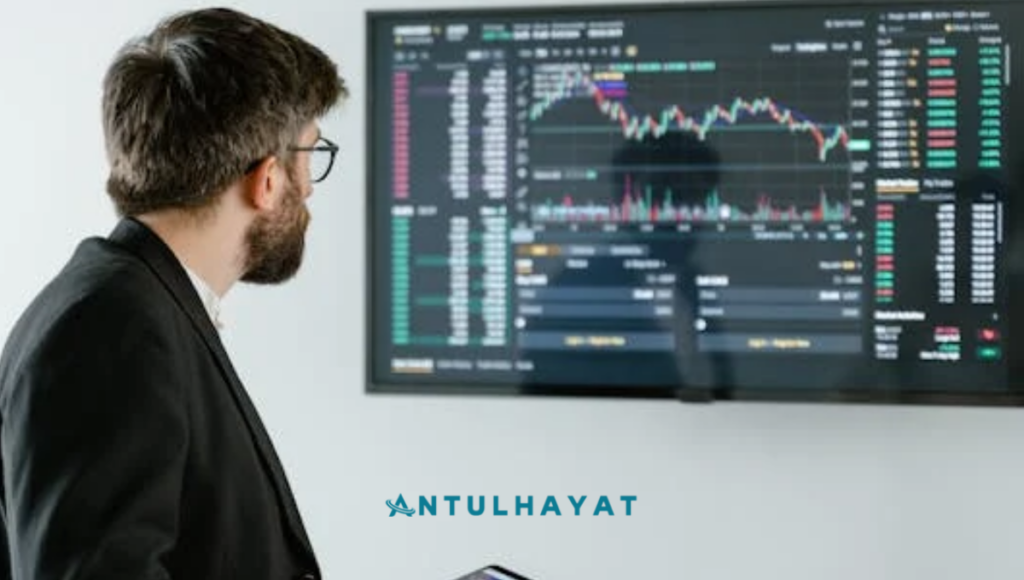Digital marketing strategy needs to be stashed by businesses to market their products or services via various digital channels, keeping both ears open for slithers of noise from those relating to their market whatever the channel or medium through which they’ve been reached. This is complete with all the bells and whistles of sites, social media and ads repurposed.
It seems almost every business knows the exact cue of you while browsing, right? They track you across the entire web and show you precisely the advertisement at the right time. This is how to get the right, most lucrative audience to reach out to and convert.

A digital marketing strategy that follows the user throughout the web would map all online behavior through census cookies, pixels, and other gadgets. It is supposed to know what has been going on with all those users and better targets them to develop for them.
What is Digital Marketing That Tracks Users Across the Web?
As long as possible, tracking those users who are free to move from one page to another on the web is possible through the high-end and latest digital marketing tools that gain information about an individual’s behavior on the internet. Marketers now analyze user behavior patterns across all possible platforms, devices, and channels, and then select only those who fit the particular profile for whom a personalized advertising strategy or an ad campaign would be most likely to work.
The technologies that such strategies usually depend upon are cookies or tracking pixels, which register how the user goes on from one website to another. Also, businesses rely on these predictive analytics in marketing to get an idea of customers’ future behavior to proactively make decisions. However, these methods must comply with data privacy regulations such as GDPR regarding ethical utilization of data.
Strategic User Tracking: A Digital Marketing Guide
Strategic tracking involves the synchronization of diverse digital marketing tools and techniques into a coherent view of holistic customer journey mapping. Analyzing users’ behaviors enables marketers to enlighten themselves into what works and does not work in order to optimize their targeted ad campaigns.

One of the main characteristics of this approach is retargeting strategies, which aim at reengaging users who had come into contact with a brand but had not converted. In this personalized type of advertising, there is an example of showing ads for products abandoned in an online shopping cart. Such degrees of precision ensure a better ROI for marketing effort.
What is the Digital Marketing Strategy That Tracks Users Across the Web?
Combining predictive analytics in the marketing strategy with the online methods of tracking constitutes the strategy’s cornerstone. This includes the collection of data via cookies and tracking pixels, cross-device tracking technology, and of course, using a finger-printing technique to identify users without relying just on cookies.
A holistic approach permits the establishment of seamless customer experiences across various platforms and devices. By measuring the results of their targeted ad campaigns through marketing analytics software, businesses can further fine-tune these campaigns. However, while doing so, there remains a critical balance with compliance to GDPR regulations in marketing, as trust is maintained.
User Tracking in Digital Marketing
User tracking actually is providing insight on the user’s activity on any online platform. By monitoring the clicks, searches, interactions, actions, etc., brands can offer the closest and finest possible tailor-made experiences in accordance with individual customers’ preferences. Understanding consumer behavior patterns makes it very easy to design effective campaigns that can convert.
At the core of this practice are such online tracking methods as session monitoring and geo-location tracking to provide real-time data about users. These methods empower organizations to compete more effectively: Understand what causes consumers’ decisions and how to deliver value.
Cross-Device Tracking
Cross-device tracking has changed the entire scenario pertaining to the user’s tracking across the numerous devices. It helps ensure an effective continuity in the marketing efforts of companies to identify a user with utmost accuracy regardless of whether the user is on a smartphone, tablet, or desktop.
Whenever the user does his initial research about a product on his phone before making the purchase on his laptop, cross-device tracking makes it possible to link those two actions. This can improve attribution models significantly, making personalized advertisement strategies more effective.
Enhancing Campaigns with Targeted Advertising
A targeted ad campaign has deep-rooted insights in tracking technology. Messages could be personalized based on browsing activity and shopping history to reach the audience.

Successful campaigns use tools like predictive analytics in marketing to forecast what will be the next need for users. None of the insights would not just improve conversions but also leave lasting impressions that create brand loyalty.
Device Fingerprinting and Machine Learning
Device fingerprinting methods are now used to identify users by specific characteristics of a user’s device such as screen size, operating system, and browser type. Hence, it doesn’t depend on cookies, a prized possession in this day of strict privacy law requirements.
However, with the addition of machine learning, device fingerprinting becomes an even more potent tool as the algorithms can recognize patterns and predict behavior, allowing the corporation to tailor its strategies to “an actual personal experience.”
Retargeting Ads
Advertising through retargeting is such an integral part of digital marketing that it now brings businesses to users who have not completed any action but once showed their interest in the business. For instance, ads on such users who viewed an ecommerce site within the time limit but did not purchase anything can be delivered back to such user for him to make the sale.
Most of these campaigns use cookies and tracking pixels for identifying users as well as displaying relevant information. It is also a method that enhances conversion rates by keeping brands on consumers’ minds.
Future Trends
The future user tracking will be much more ethical and privacy-oriented just as zero-party data collection in which customers would just spill information on their own has been surging upwards. Moreover, Predictive analytics continually transform marketing intelligence and AI to give even smarter predictions possible.
Marketers will need to change and adapt to new laws and go through technologies. Bank on these changes and take it to a higher level: server-side tracking and most probably, anonymized data collection would be common as companies now find their balance taking to account personalization and compliance with data privacy regulation.
Frequently Asked Questions
What is the digital marketing strategy that tracks users across the web?
A way to track user activity via business tools such as cookies, tracking pixels, and cross-device technology to personalize an ad exposure.
How does cross-device tracking help marketers?
Cross-device tracking links user behavior across devices, helping marketers understand actions and provide consistent ad experiences.
What are cookies and tracking pixels?
Cookies, those tiny data files that are saved on the operating system of a user’s browser. They are complemented by tiny images dubbed tracking pixels, which are designed to monitor all online activities.
Why is user behavior analysis important in digital marketing?
This aids marketers in comprehending consumer behavior as well as assists them in enhancing their campaigns to meet users’ requirements.
How do privacy regulations like GDPR affect tracking strategies?
Tracking is paved with a condition requiring consent before handling personal data. Together with prioritizing privacy, that could recognize legally the usage of the user data.
Click Here for More Marketing Information.
Conclusion
The digital marketing strategy that traces the users online is the very best for businesses. It understand human-computer interaction with websites and online establishment. It does this using data collected by cookies, tracking pixels, and cross-device technology. Which show how people like and behave in the online platform. Using this information, companies make personalized ads and campaigns. That fit like the glove into the needs and wants of the audience.
In this way, marketing is enabled to link better with customers and build better effectiveness. Also, improving their results by these methods of tracking is to some extent possible for companies because their comparison of the campaigns makes it possible to understand what works best and where it needs improvement. These are powerful conveyors, however, but must comply with data privacy rules. Such as the GDPR, as respect for privacy would create trust-and hence marketing-would be made more responsible and successful.


